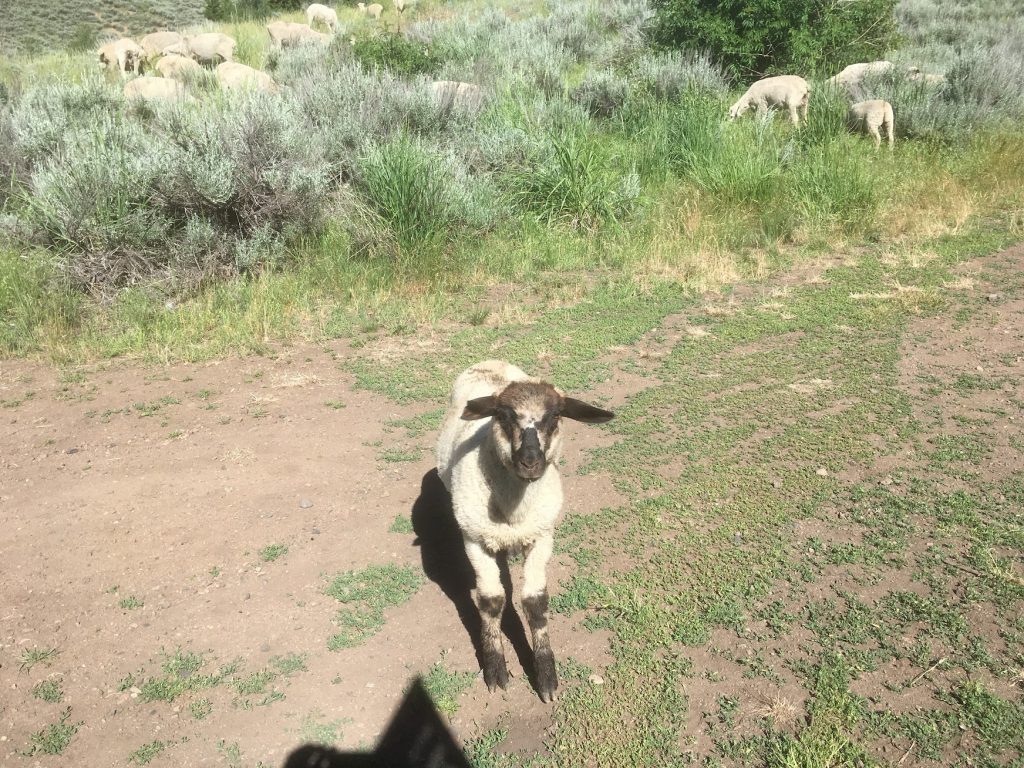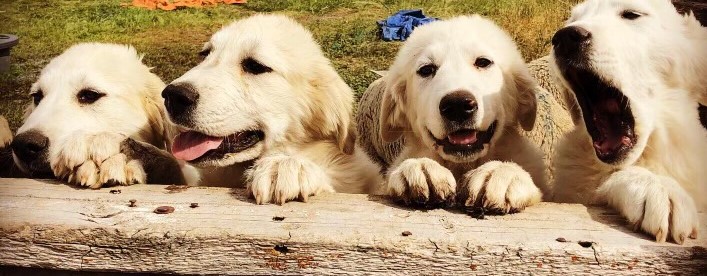In my travels, I sometimes come across sheep that appear to be separated from their herd. I also get occasional reports from the public about livestock that look lost or injured.

If I see, or get word of, an animal that appears injured or separated from its band, I contact the range-technician or land manager responsible for the land where the sheep may be grazing. These officials can contact the appropriate rancher to help facilitate needed care, or a re-uniting of the animal with its herd.
Bands of sheep are accompanied by herders and working-dogs. Herding dogs, often collie breeds, are used to help move the sheep, and large white livestock guard-dogs are employed to protect the flock from predators. The guard-dogs are often Great Pyrenees, or Akbash, or a mix of those types of breeds. Breeds that are large and protective of their kind. Raised with the lambs, the white puppies identify as being part of the herd. As they grow, they begin to take the work of protecting the flock-family very seriously.

A guard dog’s life might be characterized as long periods of boredom interspersed with short periods of intense excitement. When you are out on the trail and approaching a band of sheep, the guard-dogs may be a distance away, or napping, or otherwise distracted, but they will soon notice your presence. Sometimes, they will make no fuss at all. Other-times, they will charge toward you barking, toward what they consider to be a possible threat to the flock.
Guard-dogs can be especially antagonistic toward trail-users who are traveling with dogs. This may be because the guard-dogs consider any canine (dogs, coyotes, wolves) as one and the same; predators that need to be removed from the area. If not already leashed, leash pets as soon as you detect sheep nearby.
When being approached by guard dogs, stop, and speak calmly to them. If you are on a bike, stop, dismount, and speak calmly to the dogs. Don’t try to match their enthusiasm by waving your arms and yelling at them to stop barking. Shouting and moving about will only make the game more fun and exciting for the guard-dogs.

The quickest way to get the dogs to leave you alone is to remain calm. Demonstrate, through your body-language, and soft tone-of-voice, that you are not a threat to the herd. I know a rancher who advises against making direct eye contact with the dogs, as in dog communication, staring them down might be interpreted as displaying aggressive intent. Show the dogs that you have no intention of attacking them. In most cases, the guard-dogs will soon get bored with you, letting you move along.
Sometimes working-dogs get ahead of, or behind their flock, or are otherwise distanced from the herd. Ranchers tell us that some guard-dogs may wander off from time to time, but that the dogs are not lost; that they will eventually return to the herd. They ask the public not to befriend working dogs, or remove them from the range at any time.
If you have a concern about animals you have observed, please get in touch with the agency or land manager responsible for the allotment the band is on.
BLM Shoshone Field Office (208) 732-7200
Fairfield Ranger District, Sawtooth National Forest (208) 764-3202
Ketchum Ranger District, Sawtooth National Forest (208) 622-5371
Sawtooth National Recreation Area, Sawtooth NF (208) 727-5000
If you aren’t sure who to call, you can contact me by phoning (208) 578-2273, or email me at cleman@bcrd.org. I will pass your information along to the appropriate land management agency or organization.
